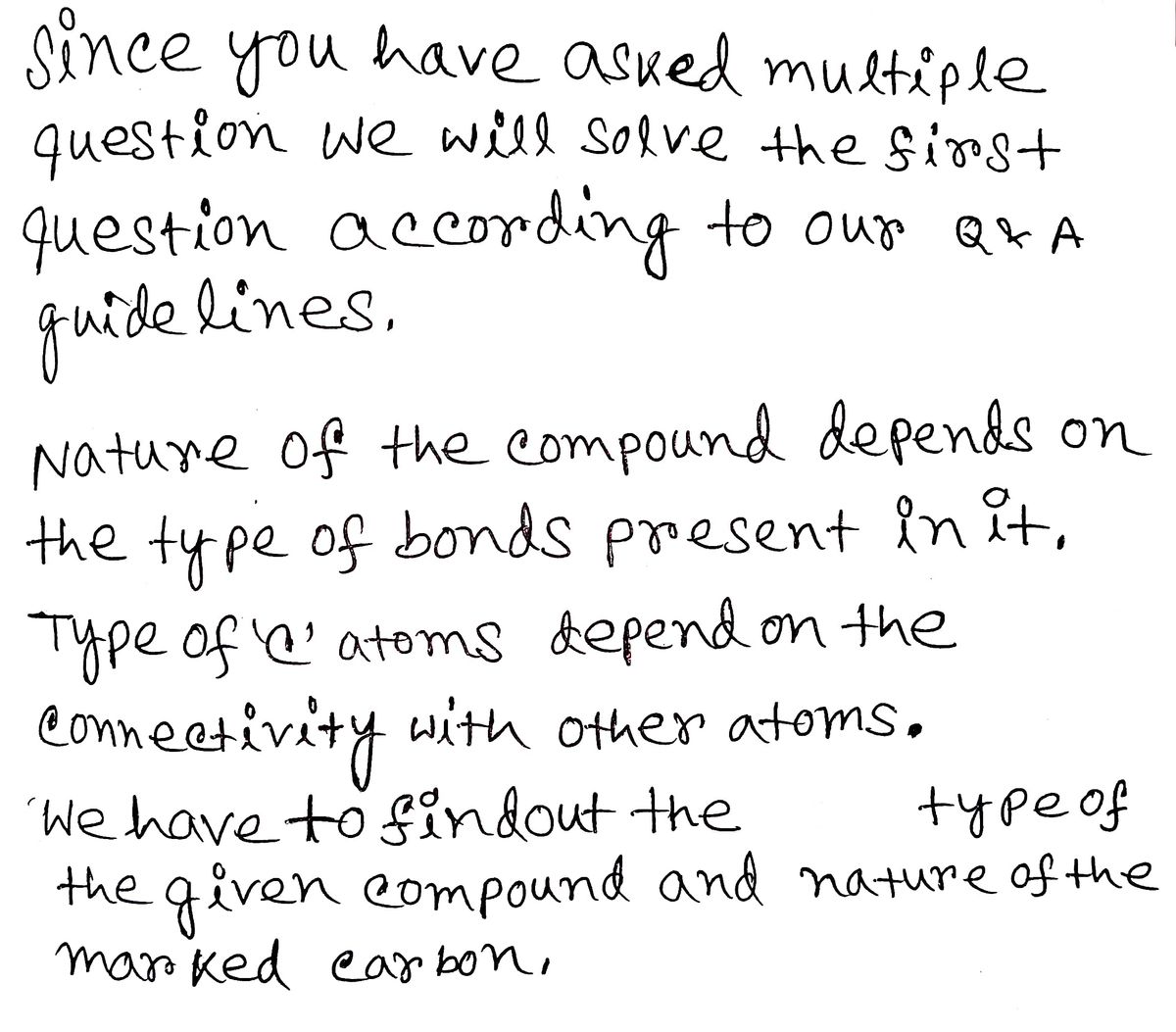b. Consider the following molecule and use it to answer the two questions (i. and ii) that follow. H H- H H H. H H H i) Classify the molecule as being saturated or unsaturated. Give a reason for your answer. ii) Classify the Carbon (marked with a *) as being 1°, 2º, 3º. State a reason for your classification.
b. Consider the following molecule and use it to answer the two questions (i. and ii) that follow. H H- H H H. H H H i) Classify the molecule as being saturated or unsaturated. Give a reason for your answer. ii) Classify the Carbon (marked with a *) as being 1°, 2º, 3º. State a reason for your classification.
Chemistry
10th Edition
ISBN:9781305957404
Author:Steven S. Zumdahl, Susan A. Zumdahl, Donald J. DeCoste
Publisher:Steven S. Zumdahl, Susan A. Zumdahl, Donald J. DeCoste
Chapter1: Chemical Foundations
Section: Chapter Questions
Problem 1RQ: Define and explain the differences between the following terms. a. law and theory b. theory and...
Related questions
Question

Transcribed Image Text:b. Consider the following molecule and use it to answer the two questions (i. and ii) that
follow.
H
C.
d.
a)
i) Classify the molecule as being saturated or unsaturated. Give a reason for your
answer.
b)
ii) Classify the Carbon (marked with a *) as being 1º, 2º, 3º. State a reason for
your classification.
H.
H
H
upp
H
For each of the following, state whether the two structural formulae shown represent
constitutional isomers or same compounds or different compounds.
H₂C
d)
H-
H₂C
c) H₂C
H
and
and
CH3
CH3
H₂C
H
and
and
H₂C
CH₂
CH3
The shorter and less substituted a carboxylic acid, the stronger the acid. Knowing this, draw
each of the acids (pentanoic acid, butanoic acid and 2,2-dimethylpropanoic acid) and order
them from strongest to weakest.
Expert Solution
Step 1: Introduction to type of compound and type of carbon

Step by step
Solved in 4 steps with 4 images

Knowledge Booster
Learn more about
Need a deep-dive on the concept behind this application? Look no further. Learn more about this topic, chemistry and related others by exploring similar questions and additional content below.Recommended textbooks for you

Chemistry
Chemistry
ISBN:
9781305957404
Author:
Steven S. Zumdahl, Susan A. Zumdahl, Donald J. DeCoste
Publisher:
Cengage Learning

Chemistry
Chemistry
ISBN:
9781259911156
Author:
Raymond Chang Dr., Jason Overby Professor
Publisher:
McGraw-Hill Education

Principles of Instrumental Analysis
Chemistry
ISBN:
9781305577213
Author:
Douglas A. Skoog, F. James Holler, Stanley R. Crouch
Publisher:
Cengage Learning

Chemistry
Chemistry
ISBN:
9781305957404
Author:
Steven S. Zumdahl, Susan A. Zumdahl, Donald J. DeCoste
Publisher:
Cengage Learning

Chemistry
Chemistry
ISBN:
9781259911156
Author:
Raymond Chang Dr., Jason Overby Professor
Publisher:
McGraw-Hill Education

Principles of Instrumental Analysis
Chemistry
ISBN:
9781305577213
Author:
Douglas A. Skoog, F. James Holler, Stanley R. Crouch
Publisher:
Cengage Learning

Organic Chemistry
Chemistry
ISBN:
9780078021558
Author:
Janice Gorzynski Smith Dr.
Publisher:
McGraw-Hill Education

Chemistry: Principles and Reactions
Chemistry
ISBN:
9781305079373
Author:
William L. Masterton, Cecile N. Hurley
Publisher:
Cengage Learning

Elementary Principles of Chemical Processes, Bind…
Chemistry
ISBN:
9781118431221
Author:
Richard M. Felder, Ronald W. Rousseau, Lisa G. Bullard
Publisher:
WILEY